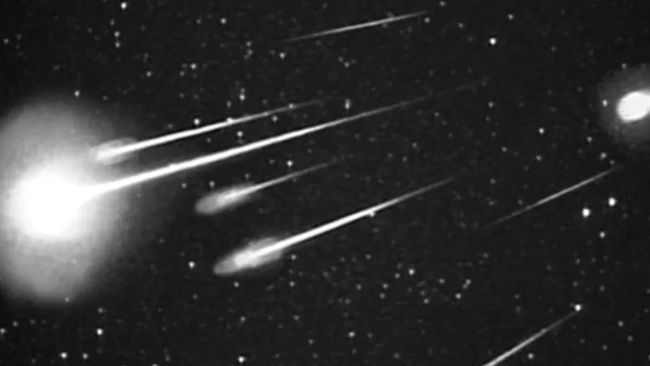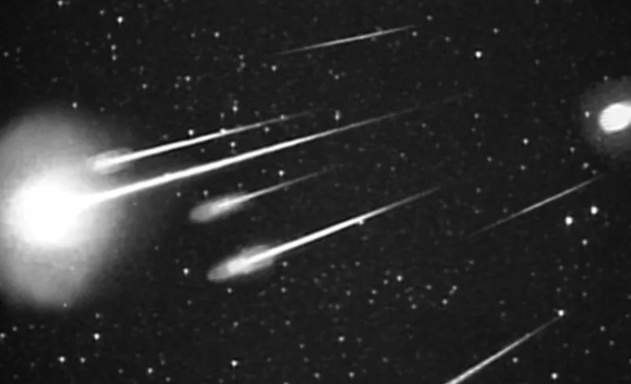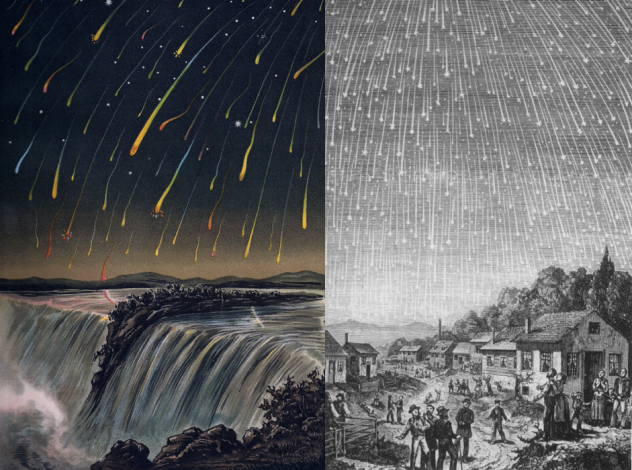November's best meteor shower peaks tonight. Here's how to see it
The upcoming weekend will kick off with another opportunity to spot shooting stars in the night sky as one of the last meteor showers of 2023 unfolds in the heavens.
Friday night into Saturday morning will be the best night for viewing the annual Leonids, the last meteor shower before the start of meteorological winter on Dec. 1.
 |
A burst of 1999 Leonid meteors as seen at 38,000 feet from Leonid Multi Instrument Aircraft Campaign (Leonid MAC) with 50 mm camera. Credit: NASA/Ames Research Center/ISAS/Shinsuke Abe and Hajime Yano |
A typical showing is expected this year, but the Leonids have a rich history, including one of the most captivating celestial sights that takes place only once in a generation.
Onlookers with a clear sky on Friday night can expect to see around 15 meteors per hour on peak night, a typical rate for many meteor showers throughout the year.
Activity will start off slow but will gradually increase as the night progresses with the frequency of shooting stars rising after midnight, local time.
Click here for the stargazing conditions for your area.
The Leonids should remain active throughout the weekend, so stargazers who find themselves under a cloudy sky early in the weekend will have the opportunity to spot meteors on Saturday night and Sunday night if cloud conditions improve.
A handful of meteors associated with the recent North Taurids may also overlap with the Leonids, increasing the chances of spotting an incredibly bright fireball.
Every November, the Earth passes through a field of debris left behind by Comet Tempel-Tuttle to spark the Leonid meteor shower. About once every 33 years, the comet passes close to the sun and spreads a fresh, dense trail of debris that sets the stage for an outburst of shooting stars akin to a fairy tale or Hollywood film.
The Leonid meteor storm of 1833 was one of the first well-documented meteor storms in recorded history with hundreds of thousands of meteor per hour. Since then, the Leonids have repeated the performance on multiple occasions, including in 1866, 1966, 1999 and 2002.
"Viewers in 1966 experienced a spectacular Leonid storm: thousands of meteors per minute fell through Earth's atmosphere during a 15-minute period," NASA explained on its website.
 |
Two illustrations depicting the 1833 Leonid meteor storm. (Left image/Edmund Weiß, Right image/Adolf Vollmy) |
Such an outburst is not predicted for this year or anytime in the near future.
"Unfortunately, it appears that the Earth will not encounter any dense clouds of debris until 2099," the American Meteor Society explained on its website.
Nearly one month after the Leonids, the Geminids are predicted to peak -- one of the best meteor showers of 2023. It may be a far cry from a meteor storm, but the Geminids will boast more than 100 shooting stars per hour on the night of Dec. 13 into the early hours of Dec. 14.
Want next-level safety, ad-free? Unlock advanced, hyperlocal severe weather alerts when you subscribe to Premium+ on the AccuWeather app. AccuWeather Alerts™ are prompted by our expert meteorologists who monitor and analyze dangerous weather risks 24/7 to keep you and your family safer.



